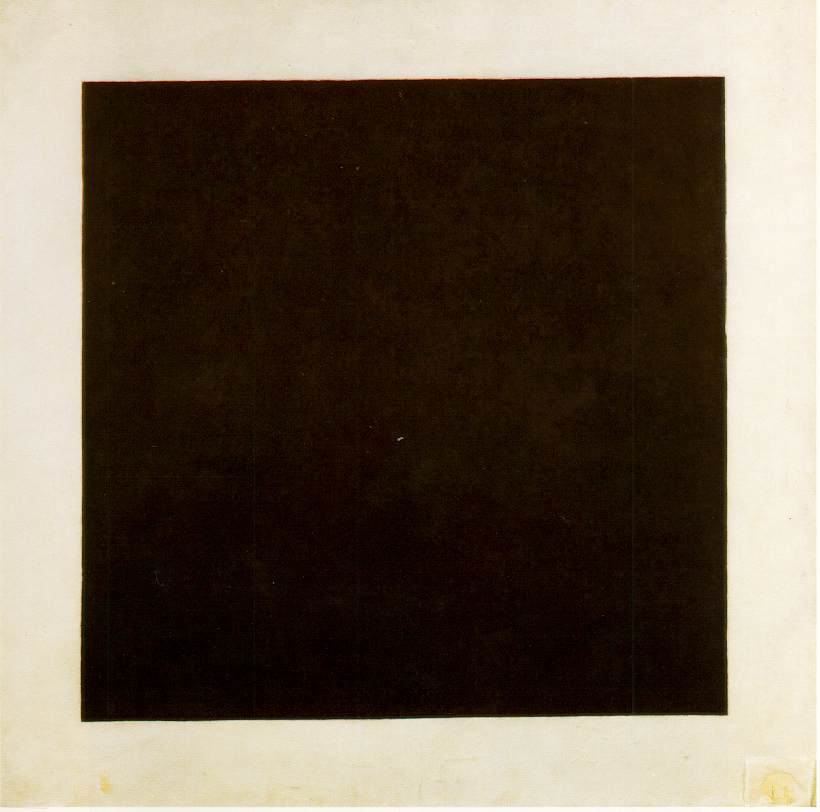 |
| "Black Square" by Kazimir Malevich (1878-1935) Oil on Linen, 1915. |
Black Square was just the first of many of this kind, artists would combine basic shapes with simple colour in order to assemble an artwork of pure abstraction. This movement began in Petrograd, Russia in the December of 1915. Malevich described the terms of Suprematism, "The artist can be a creator only when the forms in his pictures have nothing in common with nature." This shows how the artist aimed for a disconnection between his artworks and reality - with little context, background ideas or connotations - the artwork can either appear meaningless, or hold any meaning that the audience applies to it's pure aestheticism. Representation was no longer key to a painting.
This art movement, shaped around Malevich's ideas, would later morph into Dynamic Suprematism by which the static shapes would gravitate towards one another or pull apart with a context not bound to anything of this world's socio-political influences.
 |
| "The Last Futurist Exhibition" Kazimir Malevich's "Black Square" and "Black Cross" (1915) |
While Suprematism was a short lived art movement of only five years before Malevich announced it's ending in 1919, it's impact on abstraction is fundamental to the makings of contemporary art - it redefined what art can be and pushed boundaries in order to reach it's goals. Suprematism can be both likened and contrasted to previous art movements as it simply can be claimed to have inherited the need to reach a simplicity, but the execution of these works are unlike the representational quality of anything we've ever seen prior to this moment in art history.


0 comments:
Post a Comment